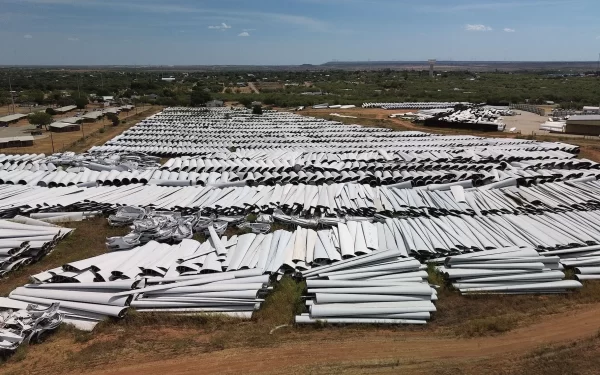There is no such thing as “renewable energy”. It’s a talking point. The climate gurus point to solar panels and wind turbines as means to solve our energy problems. There is little doubt that they output useable power and YES…the wind is free and Yes…the sunshine is free. You want “free” sunshine and “free” wind? Stand out in your yard on a sunny and windy day.
But what about those solar panels and wind turbines? Many of the first generation have reached the end of their useable lives. What is being done with those? John Kerry, Climate Czar Extraordinaire, famously said at a Congressional hearing that unemployed coal miners could be retrained to disassemble solar panels. Pause here for a good laugh. Needless to say, that didn’t make Joe Manchin laugh. Those unemployed coal miners live where? And where are the disused solar panels? I can just smell a government program here. Of course, in reality, that was just a throw away talking point, which John Kerry does whenever he doesn’t have an answer.
Okay, back to the solar panels. What are they made of? Aluminum (bauxite ore), silica (sand), glass (more sand), and copper (copper ore). Aluminum (bauxite) is mind primarily in Australia, China, India, Russia. It’s a strip mining process. Silica and glass can be mind through large sand deposits and, again, are strip mined. Copper is refined from copper ore as we know. We also know there remains a high demand for copper in many applications. And where does the most copper come from? Well, Chile, Peru, China, The Democratic Republic of the Congo (that’s and interesting one), the United States, and Russia. Copper ore is also strip mined.
Now think of what it takes to mine and process all those minerals. Think about the machinery involved and what powers them. Think about the waste products from the refining process. Think about the human cost of mining. I mentioned The Democratic Republic of the Congo, which by the way is a major source of lithium (but that’s another subject). Well, the DRC is widely condemned for using child labor in their mines.
Now how about the wind turbines? Well, they are made of 65-80% steel (and where do we get that from), 11-16% fiberglass, resins, plastics, balsawood (about 95% of all balsawood comes from Ecuador), 5-17% iron or cast iron, 1% copper, 2% aluminum. Czar Kerry did not mention unemployed mine workers disassembling and recycling wind turbines.
What happens to the wind turbines and blades when the tower comes down? West of Abilene, Texas is the small town of Sweetwater, once known for their rattlesnake roundup, but now known as a wind turbine blade graveyard. The blades—between 150 and 200 feet in length and mostly made of composite materials such as fiberglass with a binding resin—kept coming. Each was cut into thirds, with each segment longer than a school bus. Thousands arrived over several years, eventually blanketing more than thirty acres, in stacks rising as high as basketball backboards. The blades were brought here by Global Fiberglass Solutions, a company based in Washington State that announced in 2017 its intention to recycle blades from wind farms across the region. Instead of ending up in landfills, they would be ground up into a reusable material that could be turned into pallets, railroad ties, or flooring panels. Global Fiberglass is one of a few companies attempting to develop a viable business from recycling blades. Yet there they are, in West Texas, being buried in what amounts to a landfill.
So when we talk about “renewable” energy, let’s think about the part that can’t be renewed.

